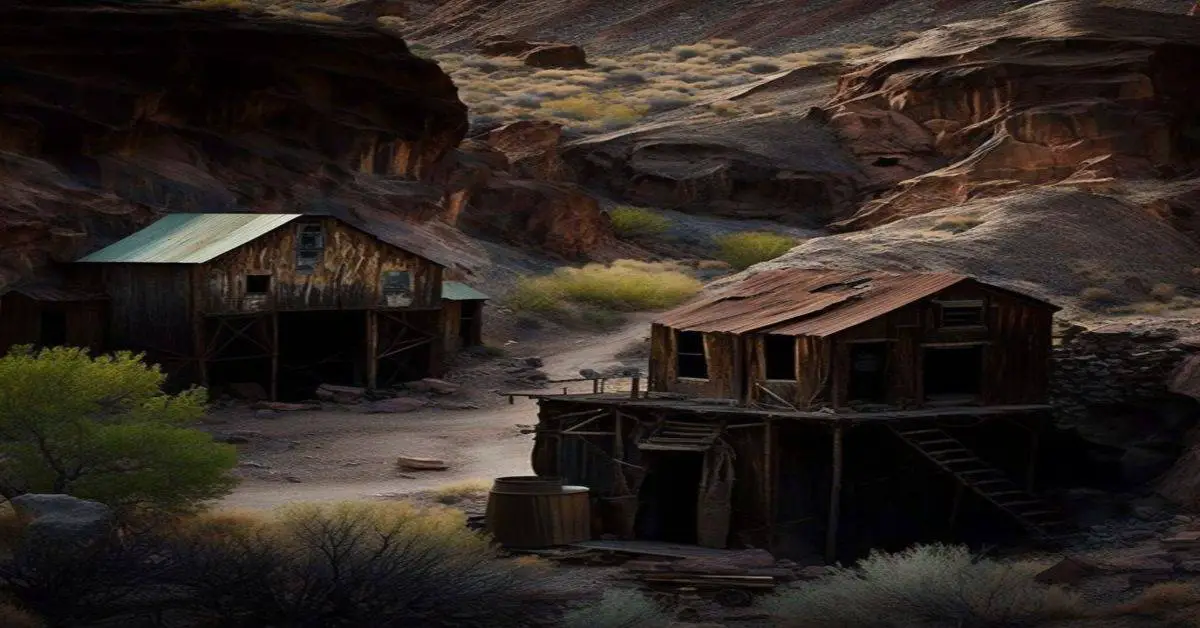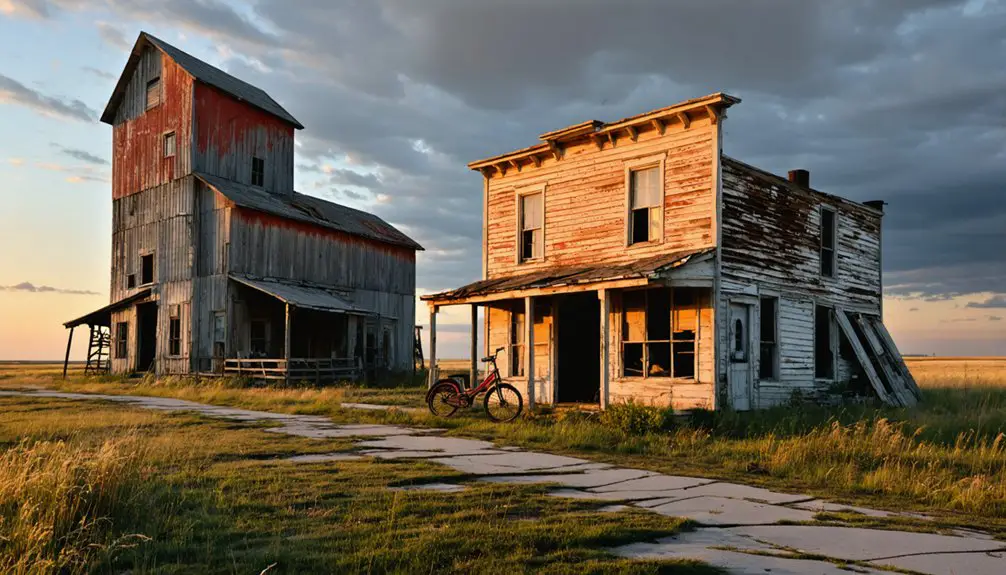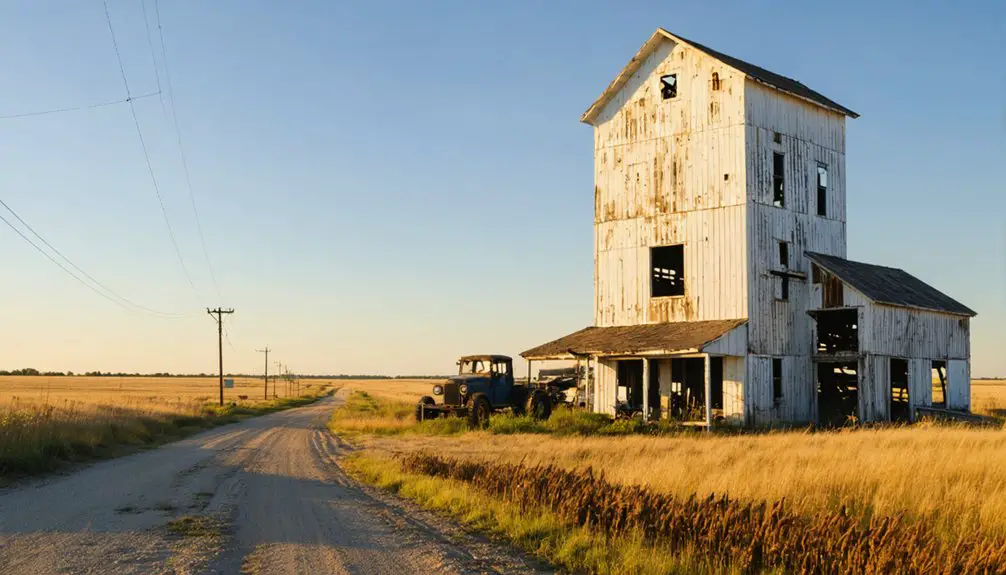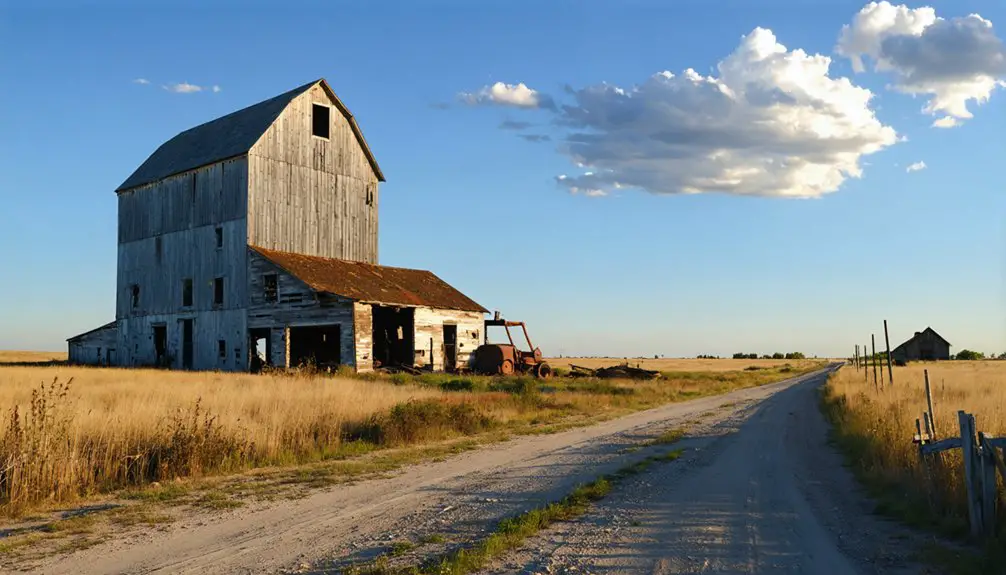North Dakota has a debatable date when the U.S. territory officially became a state. Initially, it was believed North Dakota entered into statehood on November 2, 1889, as the 39th state, but in 1995 a historian uncovered an error in the state constitution that invalidated the 1889 date.
An amendment to the state constitution was voted on in 2012 and passed, officiating North Dakota’s statehood.
There are 81 ghost towns in North Dakota. As the first European settlers inhabited the area in 1738, there are over 280 years of history associated with the area. Fur trapping was the primary way of life until gold was discovered in 1874.
Before becoming North Dakota, the Dakota territory included as part of the Louisiana Purchase in 1803 was one with South Dakota. A dispute over the capital city location gained government attention, and in 1889, the territory was split into north and south.
In November 1889, North Dakota was to join the union as the 39th state and South Dakota as the 40th.
In 1804, Lewis and Clark spent the winter in North Dakota. The steamboat in 1832 and the Homestead Act of 1862 attracted settlers to the area, but the tension between settlers and the local Indian tribes discouraged others.
It was not until 1874, when gold was discovered, that the region saw many prospectors move to the mining towns. Tension increased between the Sioux and settlers. Between 1877 and 1881, the Sioux and chief Sitting Bull surrendered the Black Hills to the United States.
The Northern Pacific Railroad’s completion brought more than 100,000 people to settle further in the territory between 1879 and 1886. The gold rush established several mining towns in prosperous areas. However, as mines were emptied and mining operations slowed, thriving towns were abandoned and deserted just as quickly as they were developed.
Arena, North Dakota
Arena was established in 1906 and was named after the town’s location. Situated in a shallow valley surrounded by hills, it resembled an arena. The population of Arena was never greater than 150 residents. The Patterson Land Company was the town’s founder after purchasing one million acres of land in 1905 for railway purposes between Bismarck and Jamestown.
A post office opened in January of 1906, followed by a one-room schoolhouse, twin grain elevators, a hardware store, two general stores, a bank, a butcher shop, a pool hall, St. John’s Lutheran Church, five creameries, a sale barn, telephone pay station, and several homes for residents.
The town of Arena was well-known for its agricultural work as the primary income source for those residing there. Corn, hay, grain, wheat, oats, and flax were the primary crops supporting the economy, along with livestock.
In 1920, the population reached its highest, around 150 people. The one-room schoolhouse was sold and moved to the small town of Marion, just four miles away, and a new brick schoolhouse was constructed on Arena hill.
By 1930, the Great Depression was showing its damage to the community. Simultaneously, the Dustbowl hit the area, and farmers were forced to leave the area. In 1935, the population had dropped to 35 residents.
The school closed in 1961 and was razed in the 1990s due to hazardous conditions. Students were bussed from Arena to Wing, a nearby town. The post office closed in 1996. In 2004, the town was deserted. Today, all that remains are a few residences, a grain elevator, the Lutheran church, and the ruins of the brick schoolhouse.
Omemee, North Dakota
Omemee was founded in 1887 within the Willow Vale Township. The town was named after Omemee, Ontario, Canada, home of the town’s first postmaster. The town was officially incorporated in 1902. In 1906, the North Dakota Department of Agriculture and Labor reported that Omemee was the fourth largest town in the county, with 650 residents.
After the town was founded, a post office began operations in 1890. Not long after the post office was established, the town was home to several general stores, banks, hotels, a school, a restaurant, a local newspaper, and even an opera house.
The town was the only one in the state to have a brass band of 22 members, including a saxophone quartette. Being located at the junction of two major railways, Omemee predicted the town would flourish and become a railway center.
However, the prediction was wrong, and the town never witnessed the anticipated population boom. Throughout the 1910s, Omemee was a railroad hub at the junction of the Soo Line Railroad and the Great Northern Railway, but the population was reduced to 332.
Bottineau and Willow City, two larger cities than Omemee, dominated the region in trade and business. Farmers were familiar with the larger towns and became accustomed to doing business there, bypassing Omemee. The town slowly started to fall apart. The post office closed in 1967.
By the 1990 census report, Omemee had been disincorporated with zero population. All left to see in the former town are the ruins of two buildings and an abandoned electric line. In Bottineau, the Omemee town bell is displayed at the Bottineau County Historical Museum.
Sherbrooke, North Dakota
Sherbrooke, the present-day ghost town, was once the county seat of Steele County from 1885 to 1919. Founded in 1884, Sherbrooke was named after Sherbrooke, Quebec, Canada. The Sherbrooke House Hotel was purchased in 1893 by Washington Warrey, a Steele County judge who served from 1894 to 1905.
The hotel was a well-known and essential part of the community, with records showing President William McKinley had even stayed in 1896.
When Steele County residents voted to move the county seat from Sherbrooke to Finley in 1918, the town began its downfall. Sherbrooke was deemed an unfavored location for the county seat since it did not sit near a railway or river for easy access.
The town of Finley received the most votes for accessibility. A petition to the Supreme Court was unsuccessful, and Finley took the county seat in 1919. Sherbrooke had lost its fame, and residents began to move away until the town was ultimately abandoned. Not much remains to be seen where the town once thrived.
Sims, North Dakota
Sims, North Dakota, was founded in 1883 as a coal mining town and brick supplier. Located in Morton County, the town reached a population of more than 1,000 residents at its peak. The mining town had several residences, general stores, a Scandinavian Lutheran Church, and a post office that opened in 1883, the same year the town was established.
The town’s population frequently fluctuated from 1,000 at its peak to 86 in 1910 and back up to 98 in 1940. The post office ceased operations in 1947 as the town was continuously declining, work was becoming increasingly limited, and residents were moving to other areas where work was available. The last permanent resident to leave Sims was in the early 2000s.
Sim’s first Scandinavian Lutheran Church, built in 1884, was a church and residence. A new church was constructed in 1896 next to the first church house. Even after the town was abandoned, locals in the surrounding area continued to gather every other Sunday for services. The current church congregation consists of nearly 50 members.
The church is noted to be the oldest Lutheran church in North Dakota, west of the Missouri River. While the town is empty, it is rumored that one resident remains; a former pastor’s wife who died between 1916 and 1918. Her spirit roams the area wandering from room to room and can occasionally be heard playing the organ.
Verendrye, North Dakota
Initially known as Falsen, Verendrye was founded in 1912 by Norwegian settlers and named after Norwegian Statesman Christian Magnus Falsen. The following year, in 1913, a post office was established. The population in 1920 had grown to 75 residents.
In 1925, Falsen was renamed Verendrye to honor the French-Canadian explorer Pierre de la Verendrye, who was on an expedition through the North Dakota prairies.
By 1938, the population had reached 100 people. The community boasted businesses, general stores, a church, a post office, and a schoolhouse. The Verendrye Electric Company joined the other companies in 1939 but moved its operations thirteen miles southwest to Velva in 1941.
Residents began to move away in the late 1960s after the post office closed in 1965. By 1970, the last town inhabitant had moved away. The town was abandoned until 1990 when the land was purchased for a farmstead. The ruins of the schoolhouse and a memorial dedicated to the fur trader and explorer David Thompson remain in Verendrye.
Mentionable North Dakota Ghost Towns
Griffin, North Dakota, can be found halfway between Bowman and Rhame. Before being known as a ghost town, Griffin was once one of the largest stockyards in the southwest region of North Dakota.
About two miles north of the townsite, the Yellowstone Trail, which was the first cross-country highway from Massachusetts to Seattle, was one of the first roads in North Dakota. The Yellowstone Trail is marked by three-foot-tall stones painted yellow. Main Street gun fights supposedly happened in this cowboy-style town.
Temple, North Dakota, is a ghost town located in the state’s oil patch. The township was established in July 1906 and was initially named Haarstad after the townsite owner. The Great Northern Railway has later renamed the town Temple in 1908.
A post office opened in March 1908 but was closed in April 1965. The town’s schoolhouse was moved in 2010. By 2015 the last houses and other structures had either caved in, were burned, or been demolished. All that remains from the debris of destruction are a church and a smaller outbuilding.
Lincoln Valley, North Dakota, has been vacant since the late 1970s, but the buildings and ruins left behind tell a story of a quaint farming community. When the town was alive and bustling, there was a bar, an ice cream joint, several homes, a candy store, general stores, a post office, a church, a schoolhouse, farmhouses, and abundant cropland.
After the post office closed in the early 1970s and the last business was closed mid-1970s, the town saw its fall. Younger generations relocated for college and city jobs, while the older generations retired and left farming life behind them. Several buildings still stand today, although they may have been partially reclaimed by nature in some areas.



